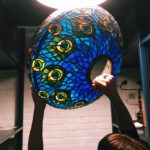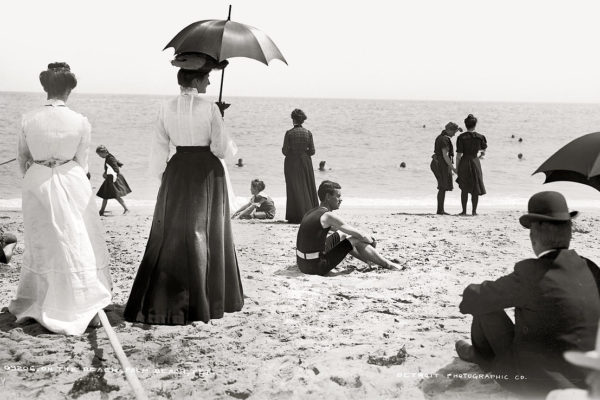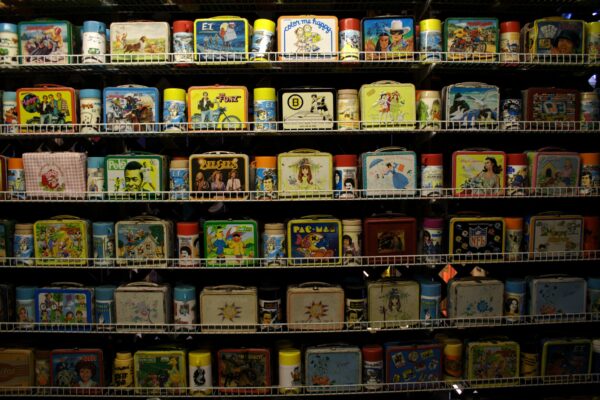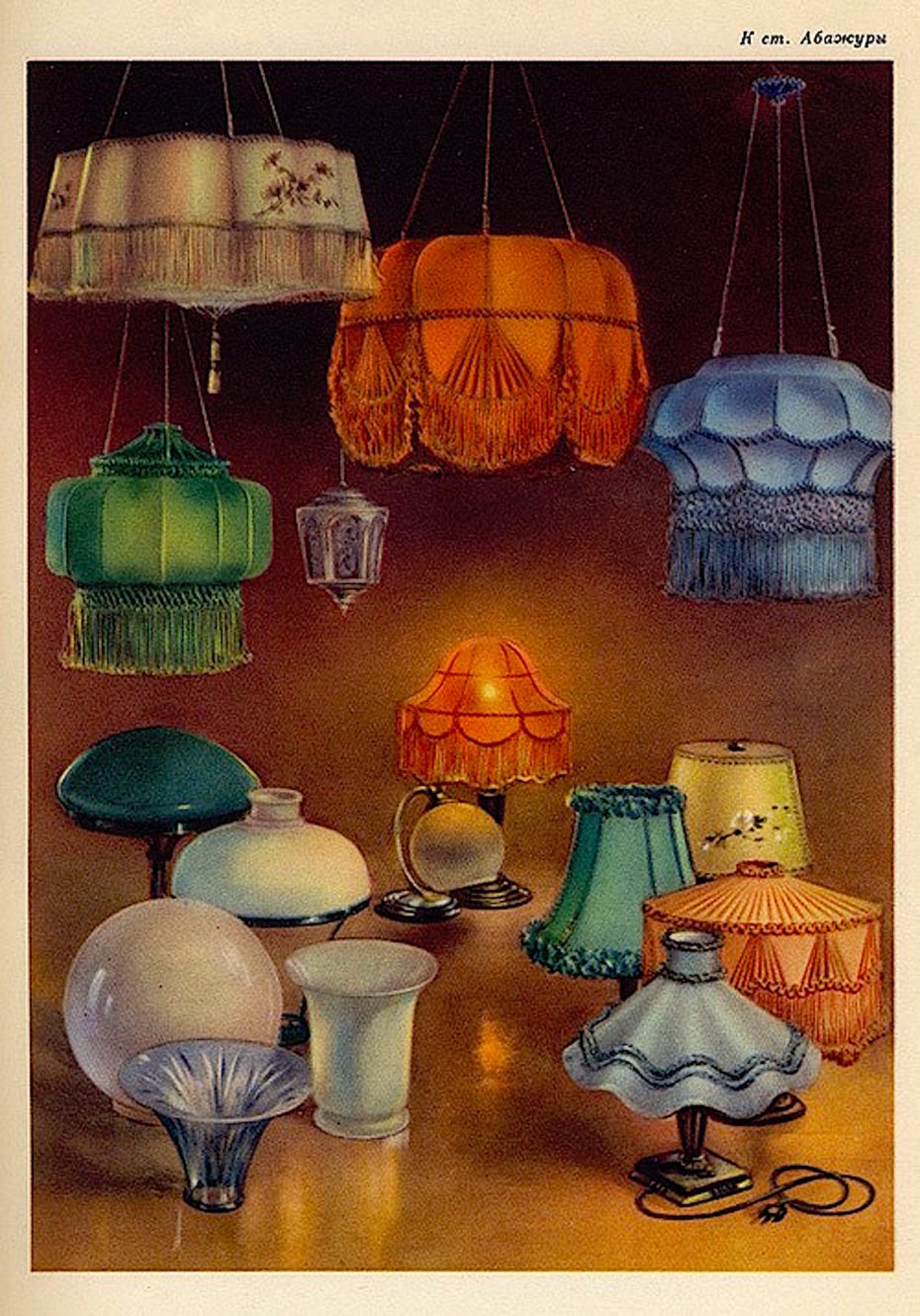
The Southern Belle. The Moon Beam. The Serenade. We’re not spitting romance novel titles, honey – we’re talking lamps. Kitschy, retro lamps. Lamps with names worthy of their painstakingly groovy macramé. Novelty TV lights in the shape of an elephant. Lamps made of yesteryear’s synthetics (ex. lucite, fiber glass, popcorn acrylic) and design gimmicks that may seem trivial, but hold a mirror up to Western culture during the mid-to-late 20th century. There are, of course, endless possibilities for kitsch lighting but we’ve narrowed it down to our favourites. Let’s start off nice and easy with a seriously ummm …. “sassy” selection of lampshades…
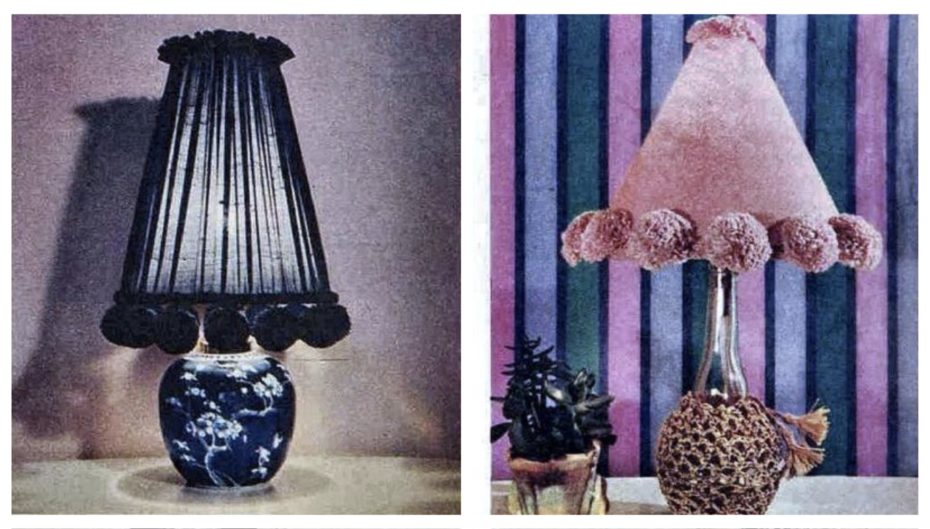

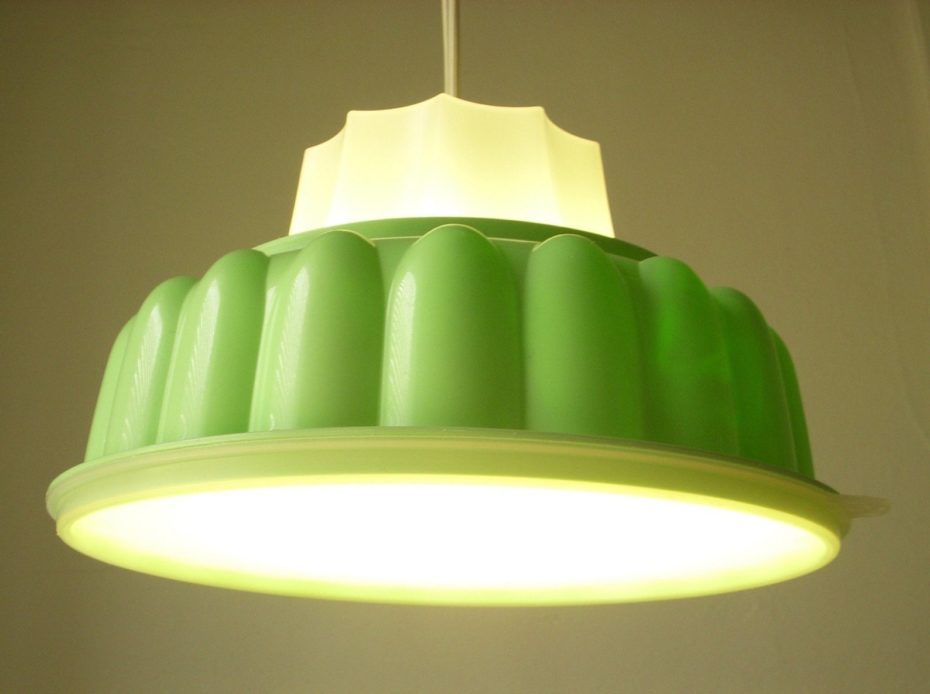
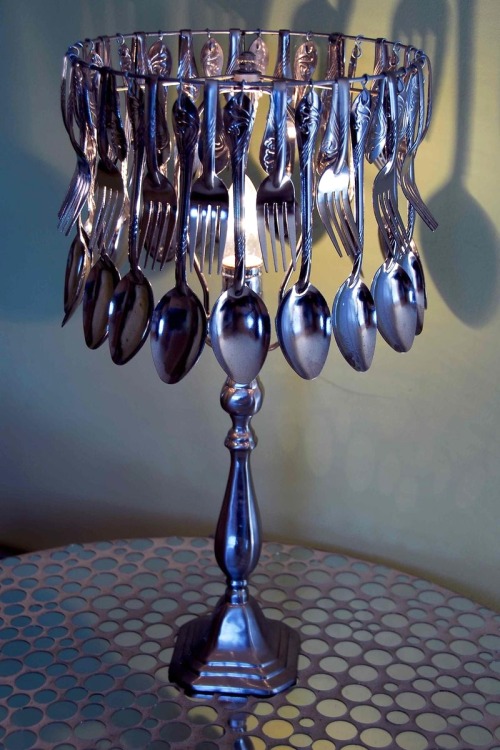
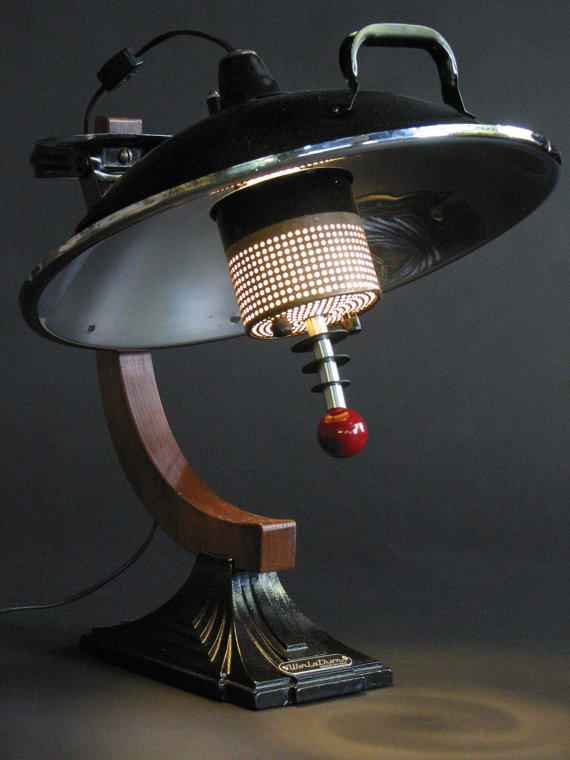
Speaking of lampshades, in all seriousness, prepare to be wowed by a little secret from our address book….
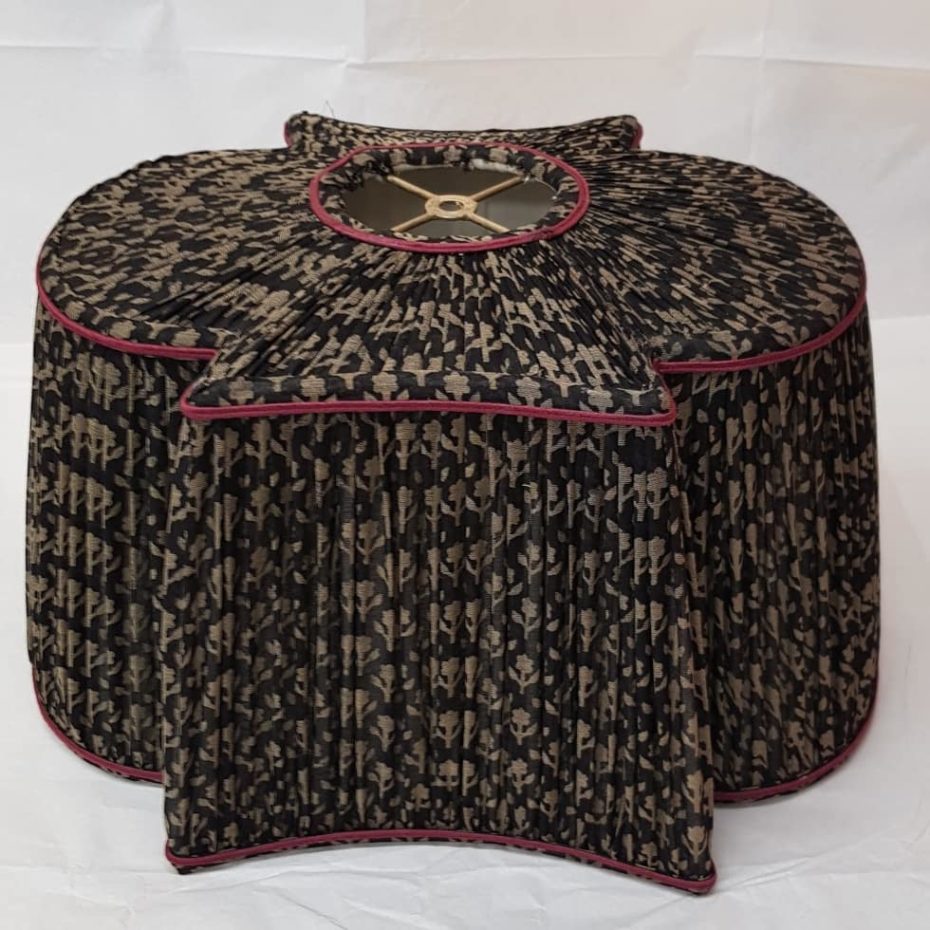
Paralumi diLuigi Senzacqua is a vingage lampshade dealer located in the centre of Rome since 1967. Check out some of their drool-worthy pieces…
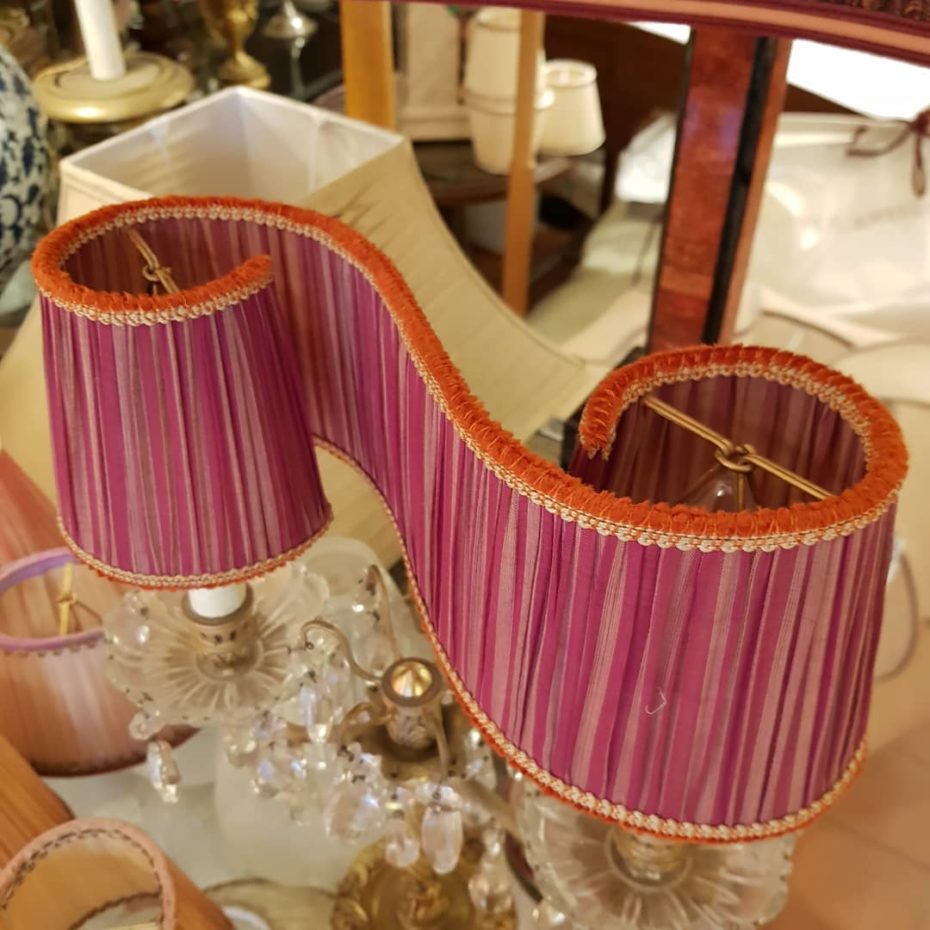
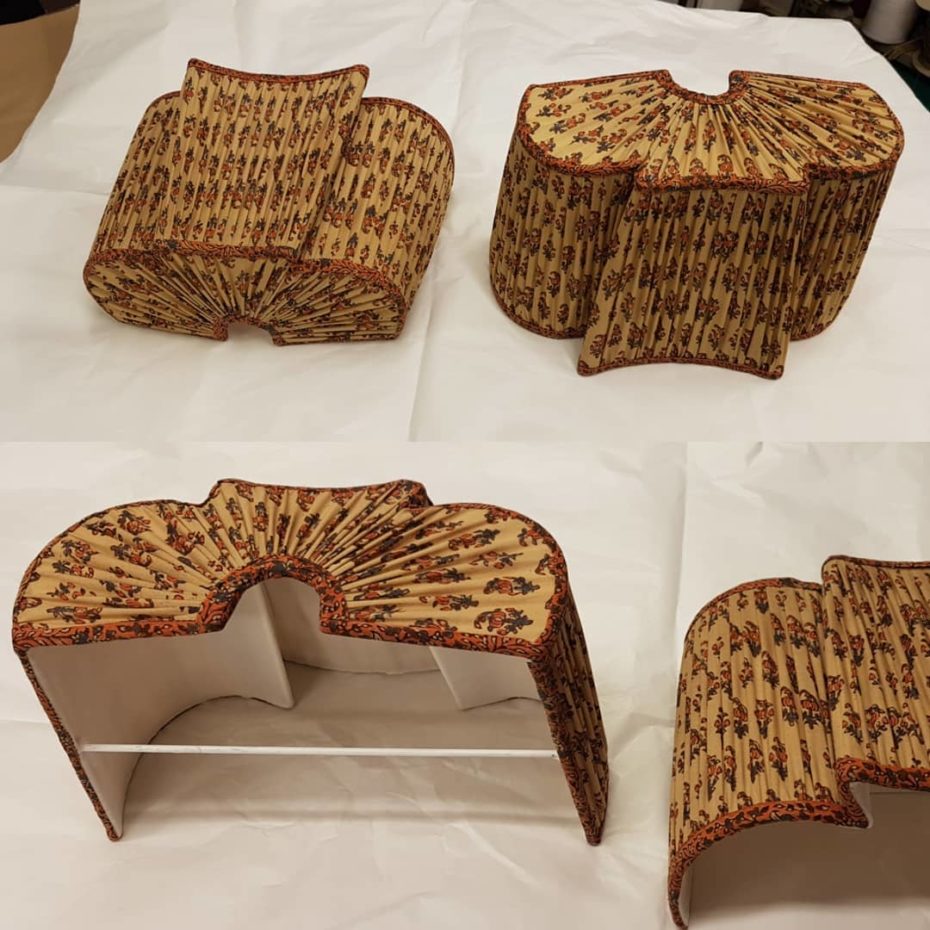
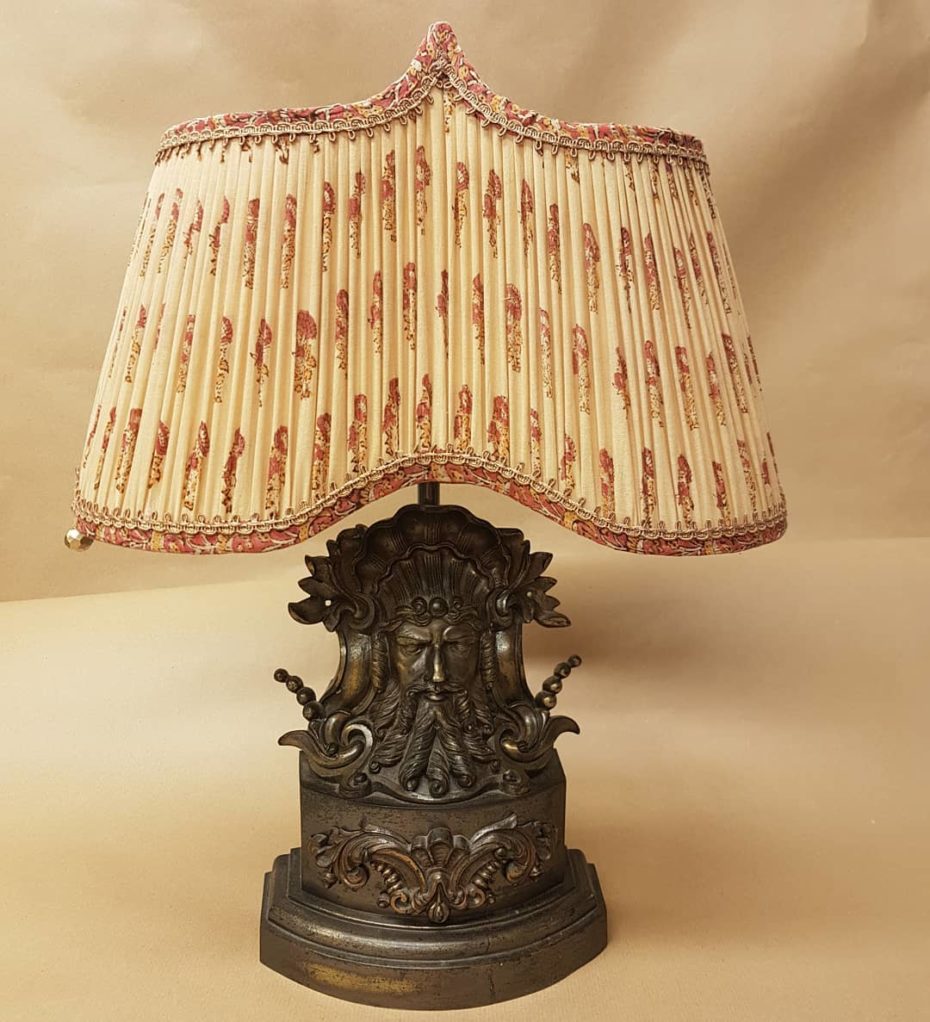
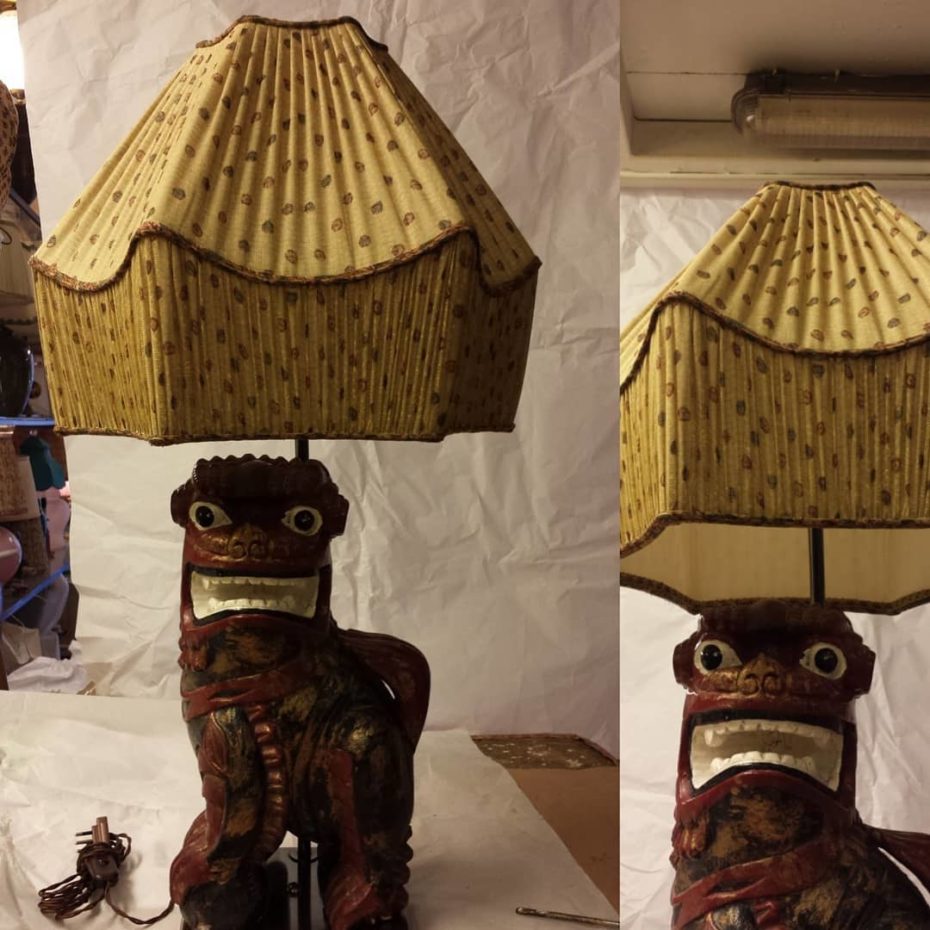
You can keep up with their latest stock via the Instagram account.
But back to the hardcore stuff. And you thought Tiffany lamps went too far with glass…
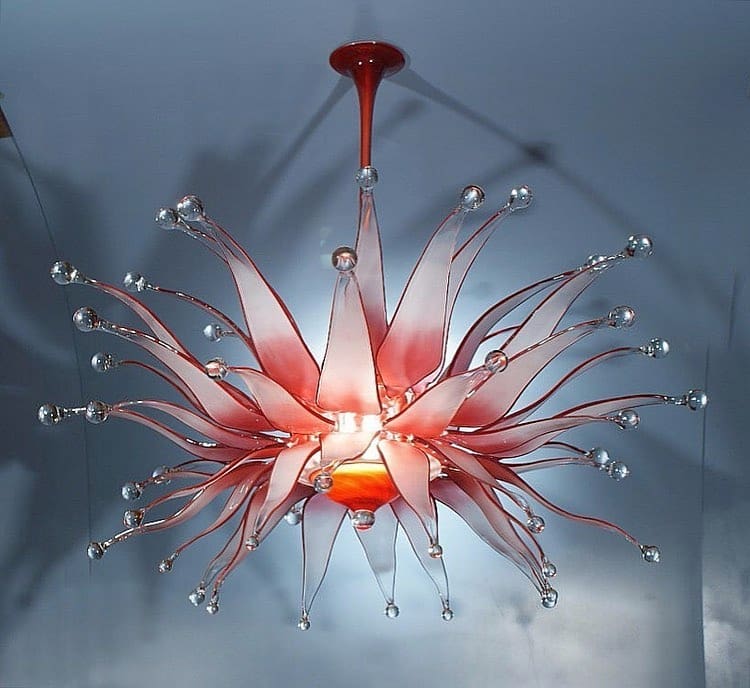
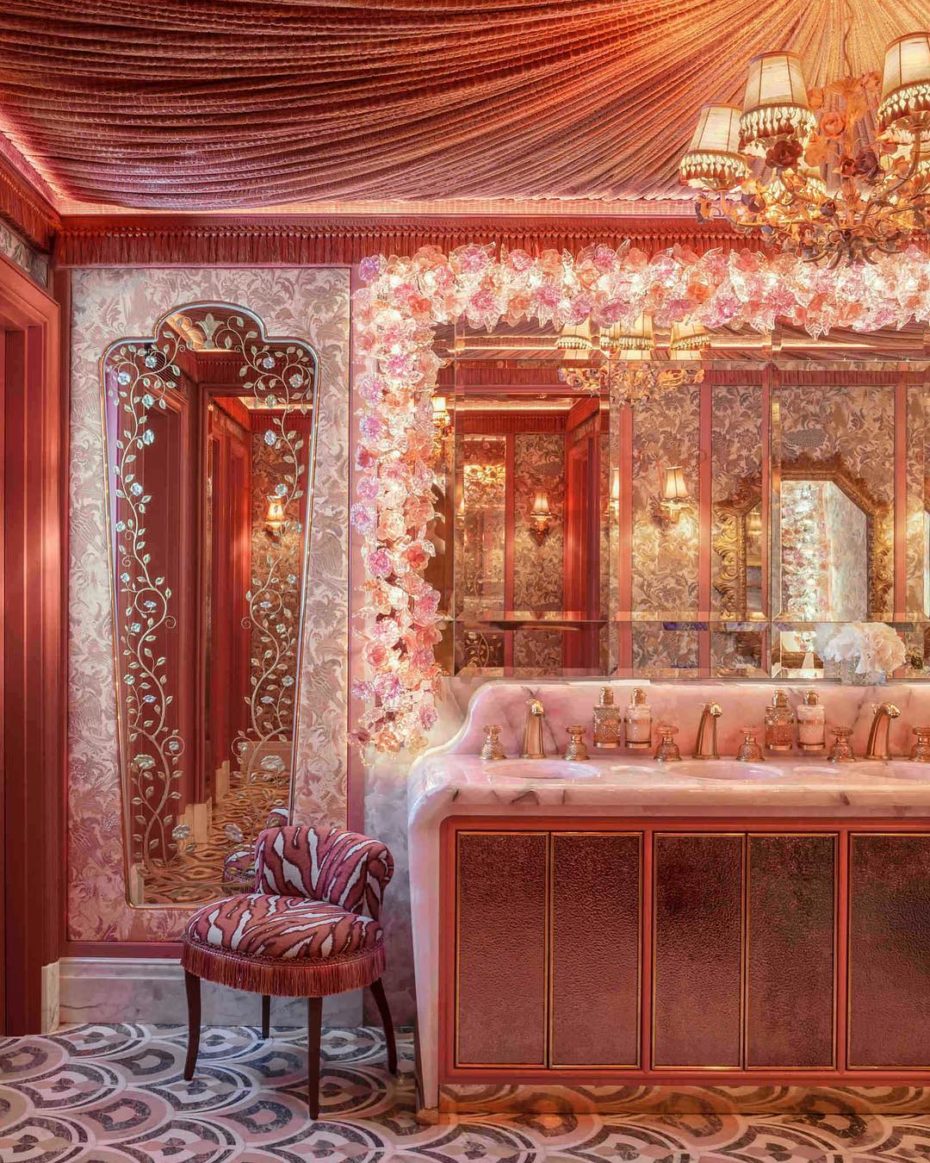
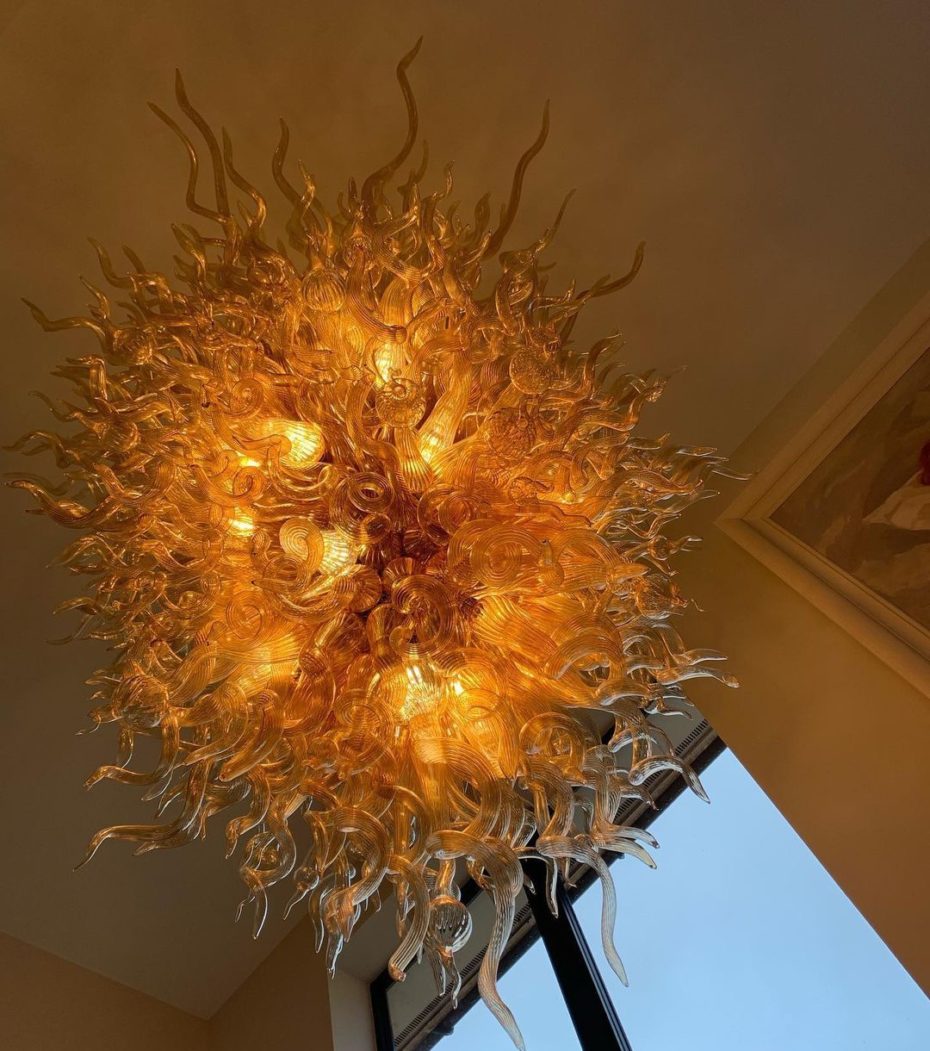
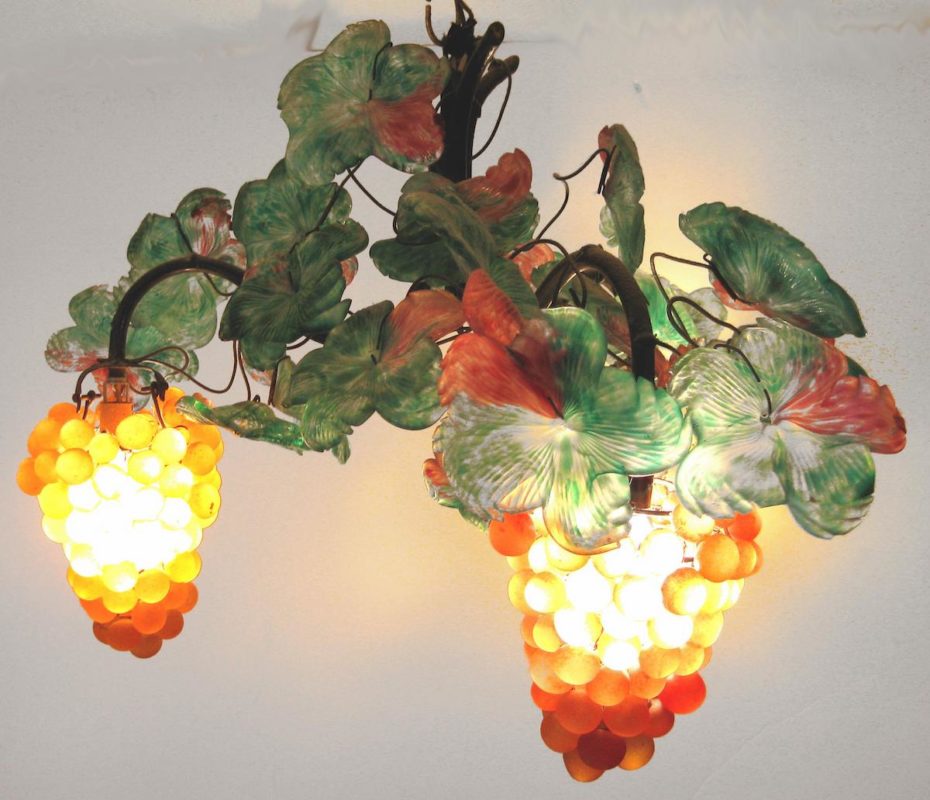
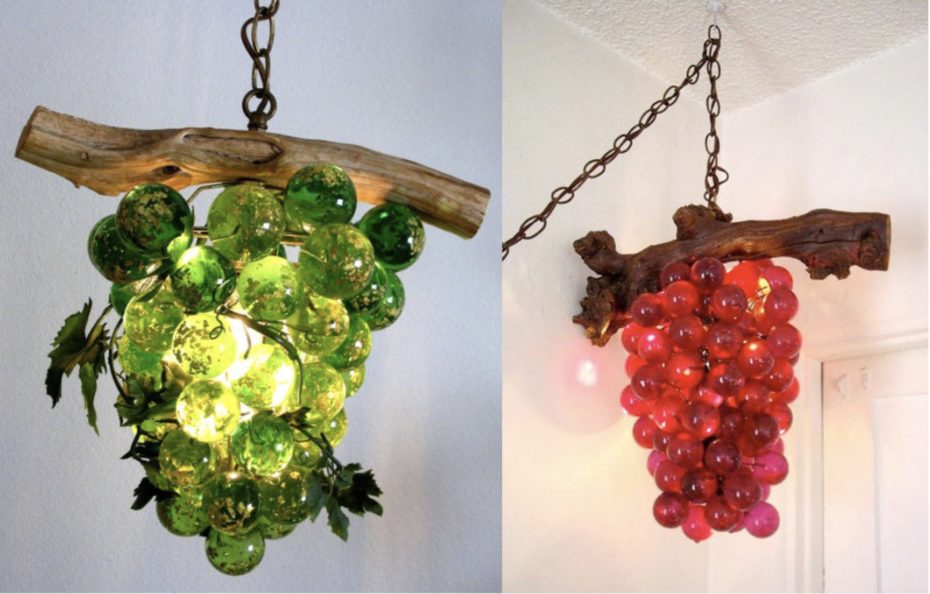
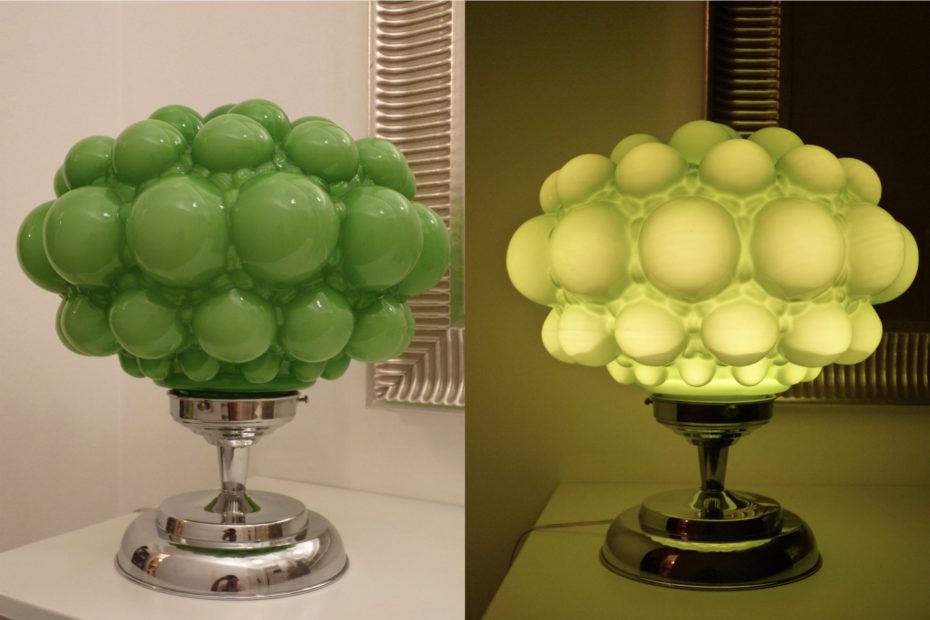
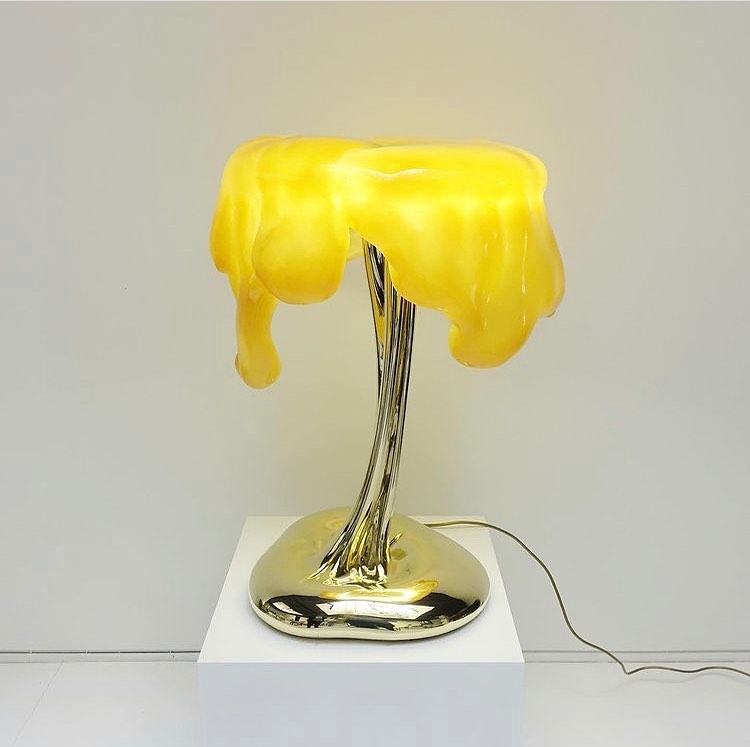
And can’t forget the infamous lava lamp trend…
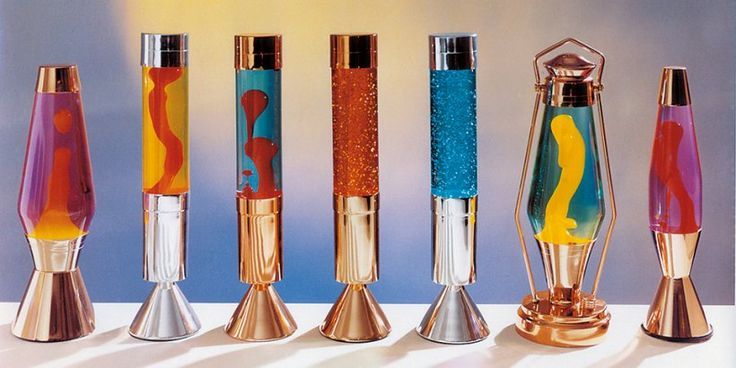
Crestworth is the original name of Mathmos, the company founded by Edward Craven-Walker in 1960s who invented the lava lamp in 1948, but it took him 15 years to perfect the design. He said he was sitting at his local pub when he was inspired by an egg timer made of a cocktail shaker filled with alien-looking liquids bubbling on a stove top. Craven-Walker was an accountant whose other passion became making underwater nudist films. His lamps fell out of fashion in the 1970s but had a resurgence in the 1990s, possibly thanks to the Austin Powers films, when the company sold over 800,000 light fixtures.
But how about these macramé delights, which seems labour intensive, but hey – no Interweb distractions in 1977, right?
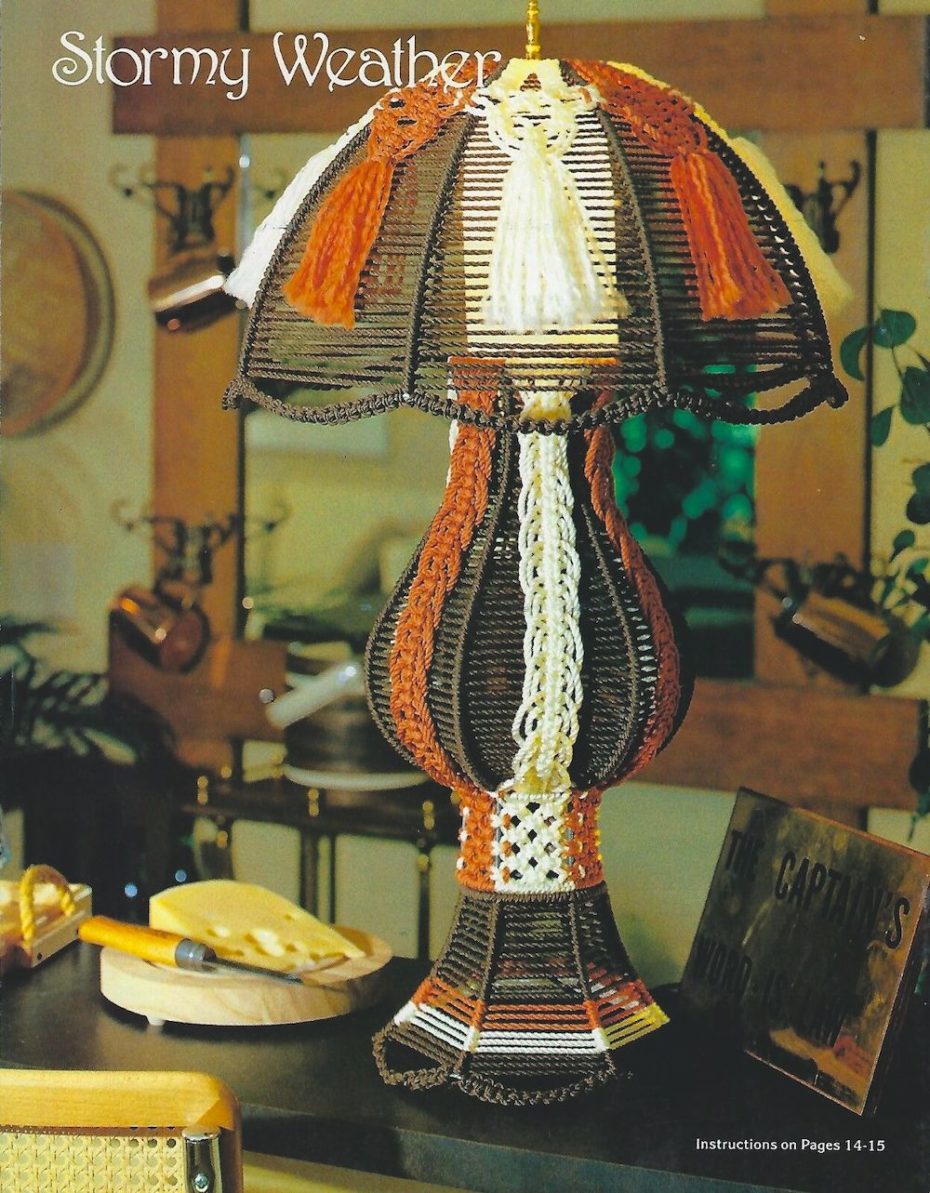
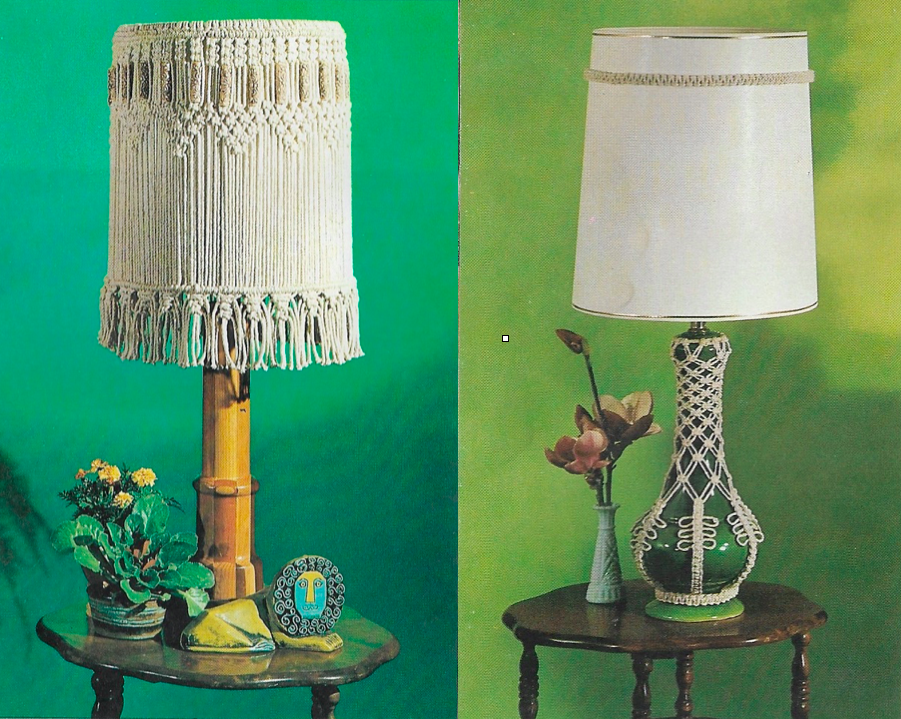
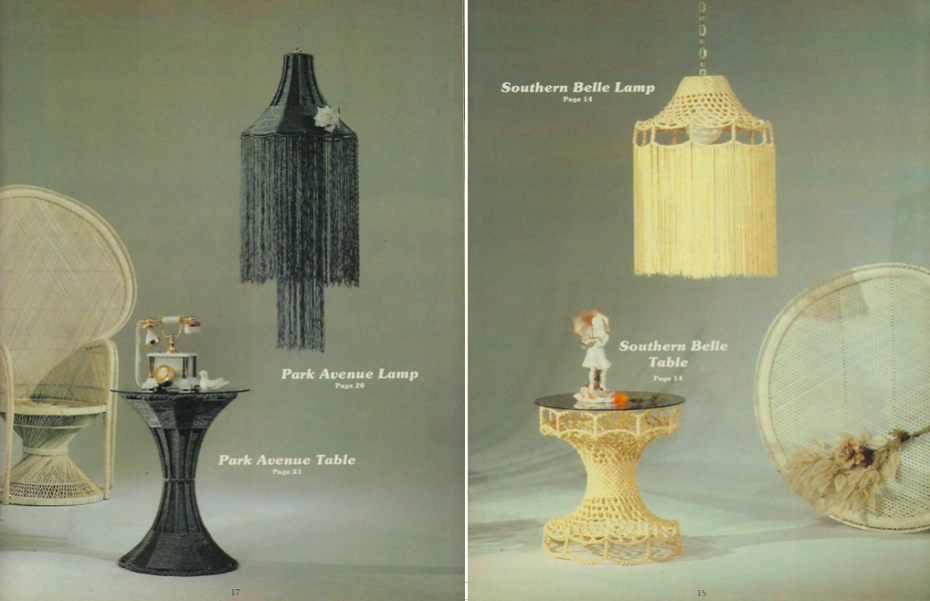

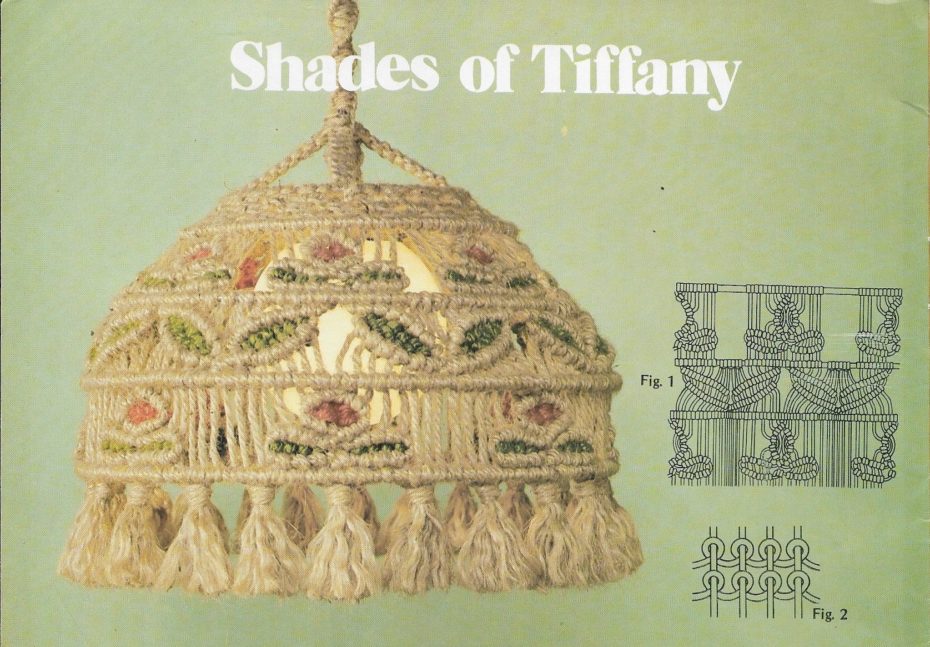
Arguably some of the best kitsch pieces came out of the post-WWII years, which saw a revived interest in tropicana (cue this hotel’s epic basement tiki bar). Luckily, pre-war innovations in plastics kinda helped paved the way for their production. The jet set age was also on the rise, embellishing the American Dream with stories of far-flung travel. And if you couldn’t swing a ticket somewhere tropical? At least you had your seashell sconces, or your flamingo lamp.
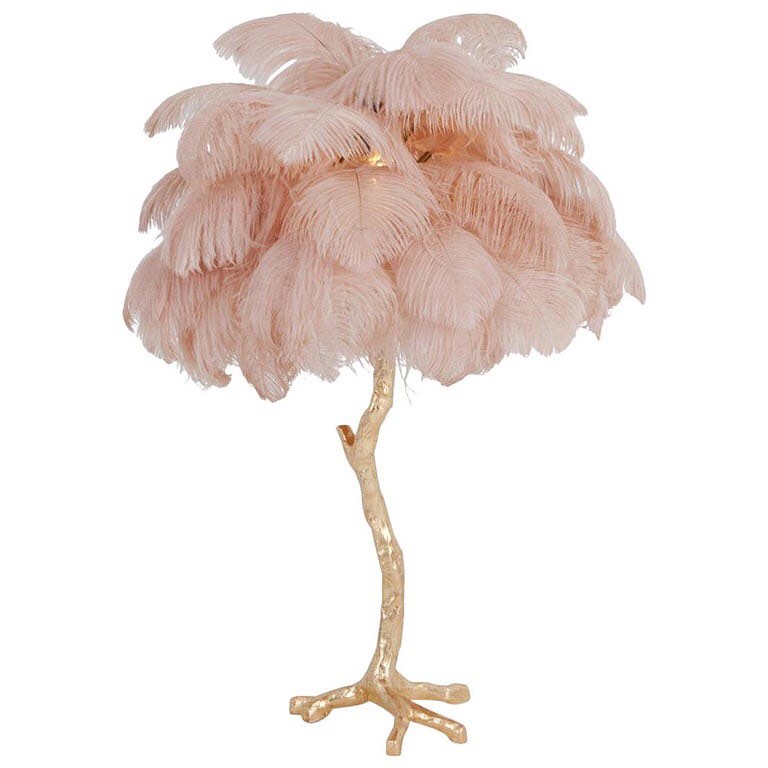
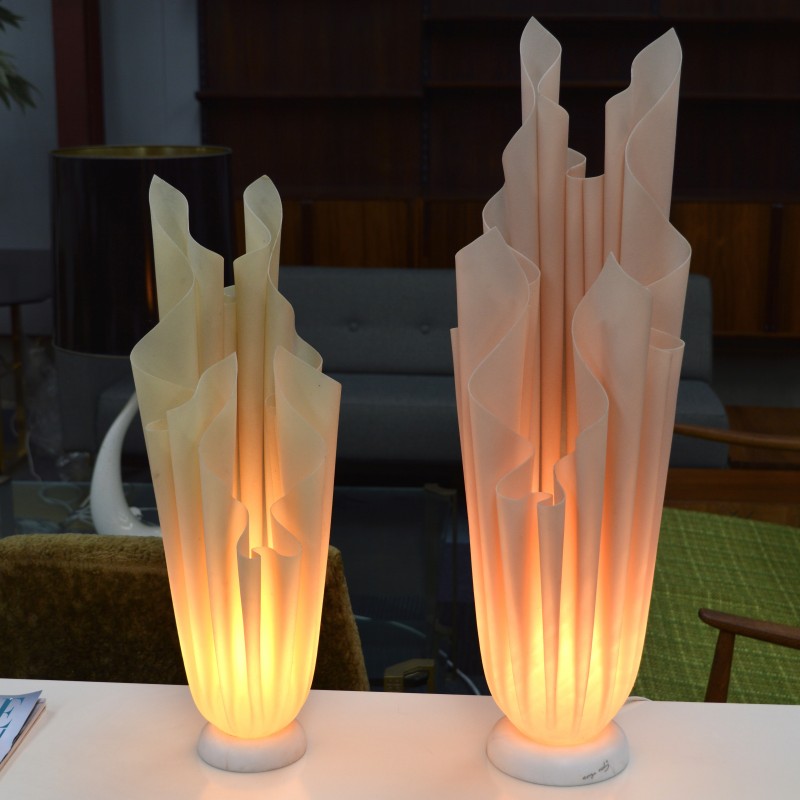
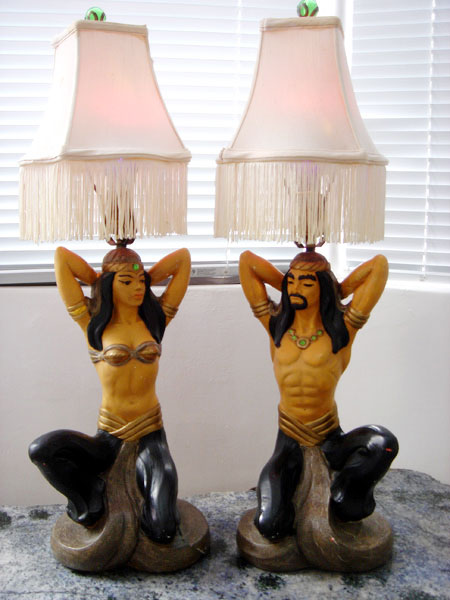
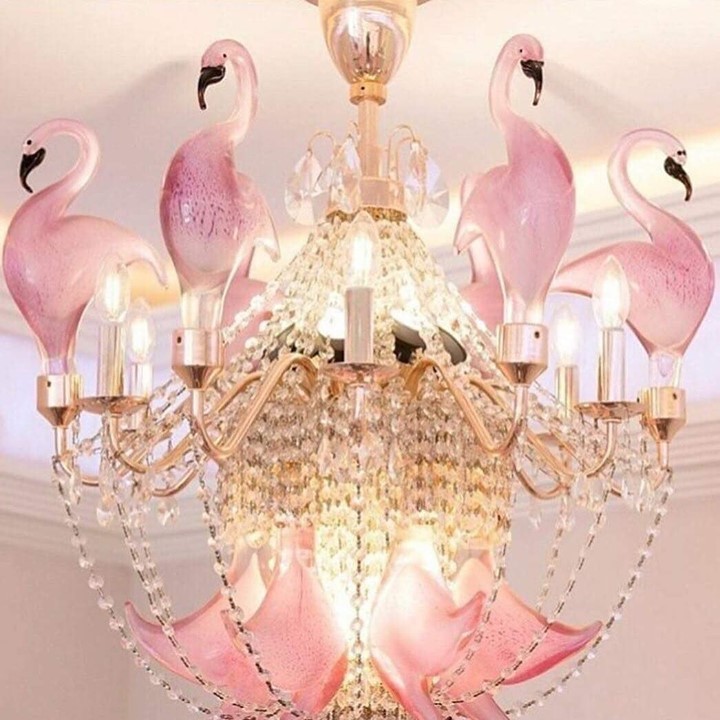
And don’t even get us started on chandeliers…
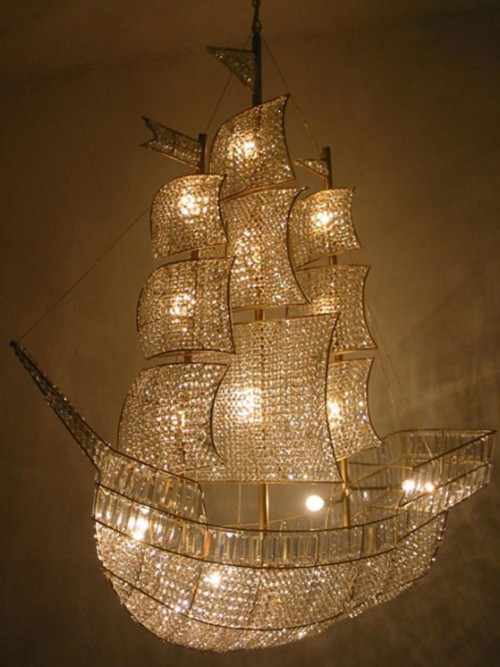
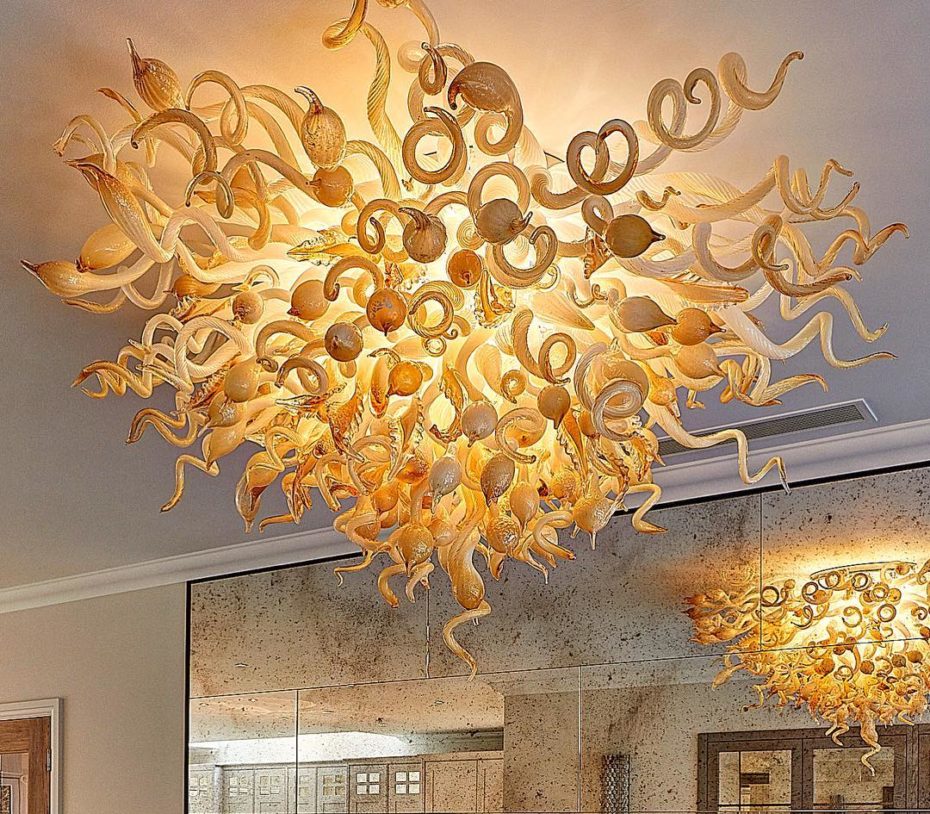
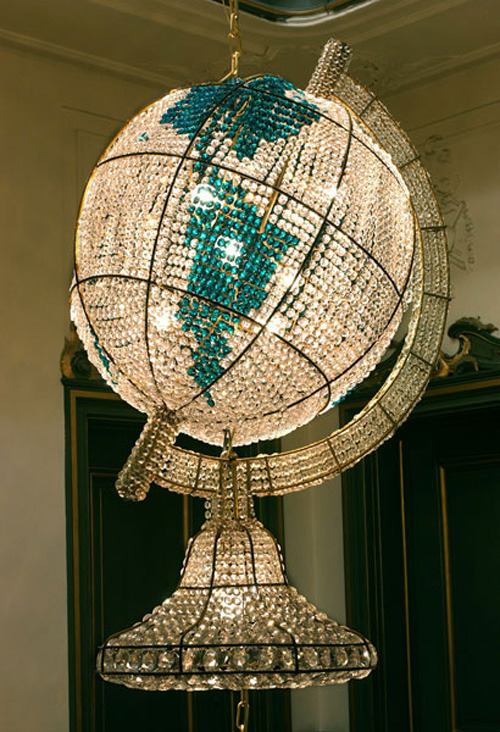
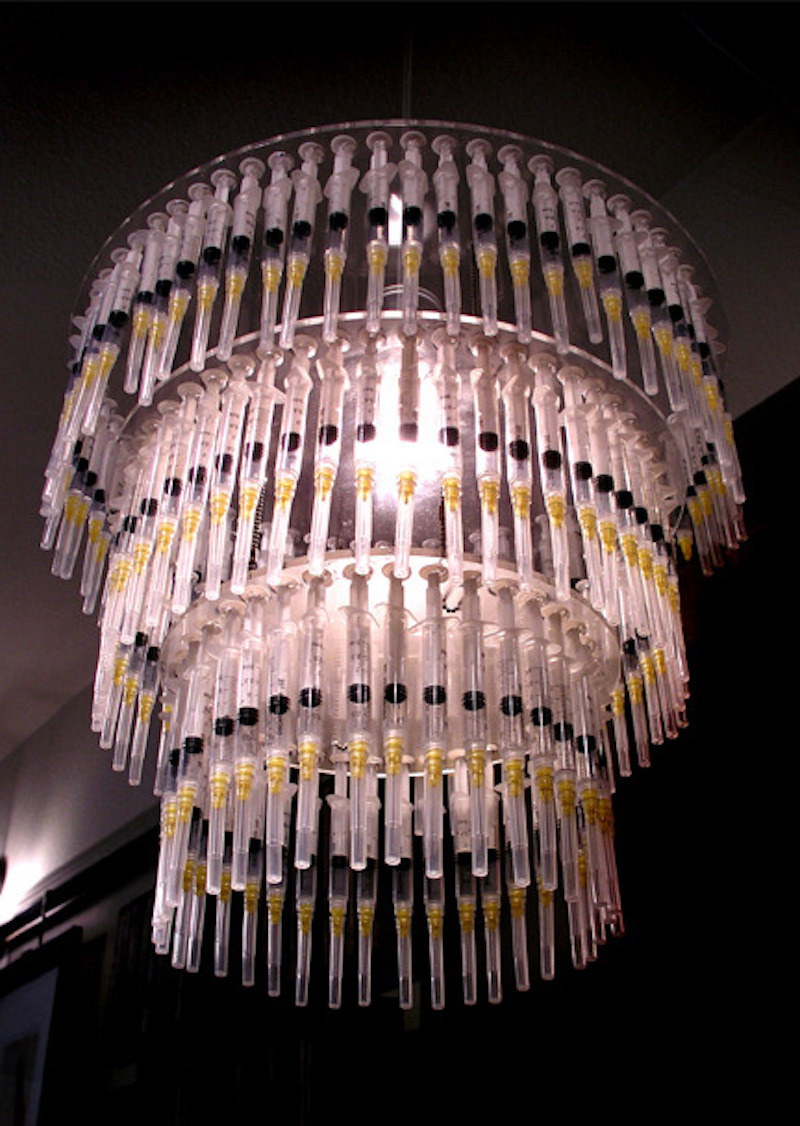
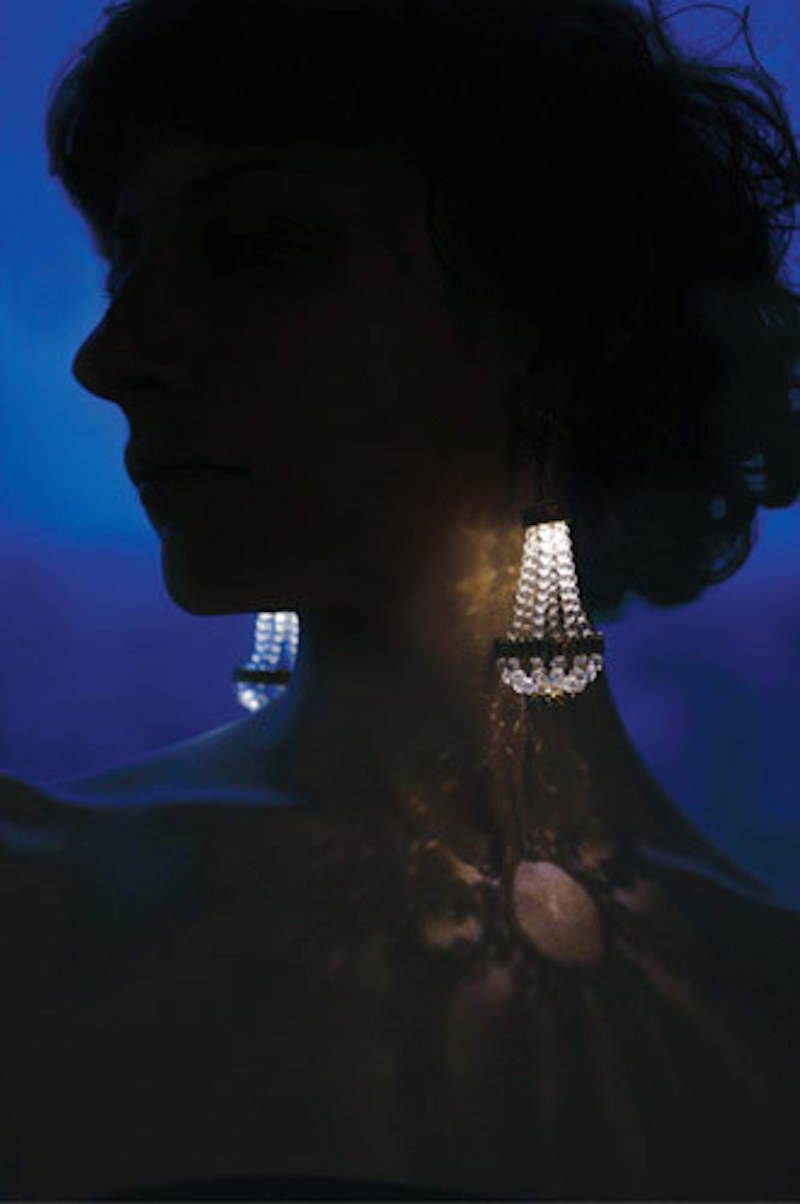
TV lamps appeared in the 1940s with the advent of the personal television set. People were afraid, explains Tom Santiso in his 1999 TV Lamps guide, that “extensive viewing in a dark room of such a small TV screen would cause eye damage. Yet too much direct light would diminish the picture quality. Thus, television lamps were born [depicting] people, birds, animals, vehicles, and others objects.” The good news for us, is that fragrance and TV lamps are both fairly price accessible, starting at about $70.
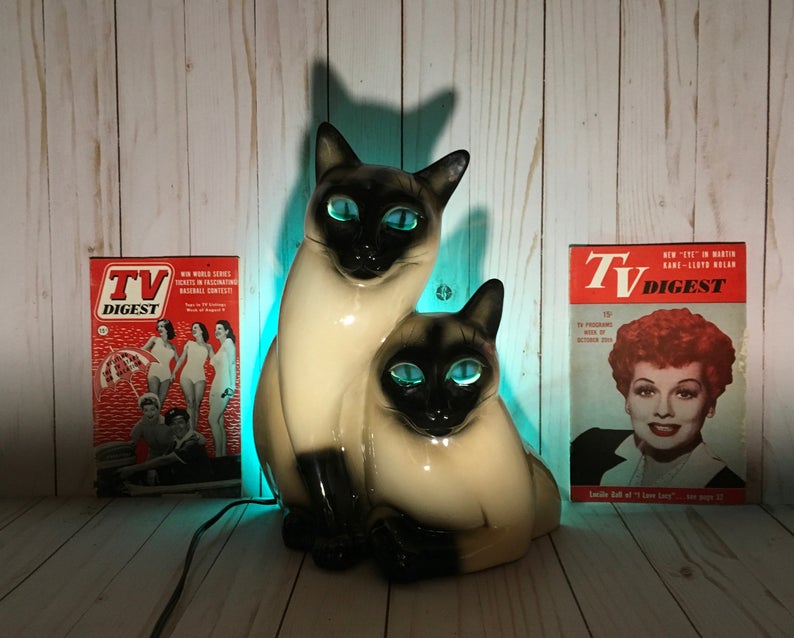
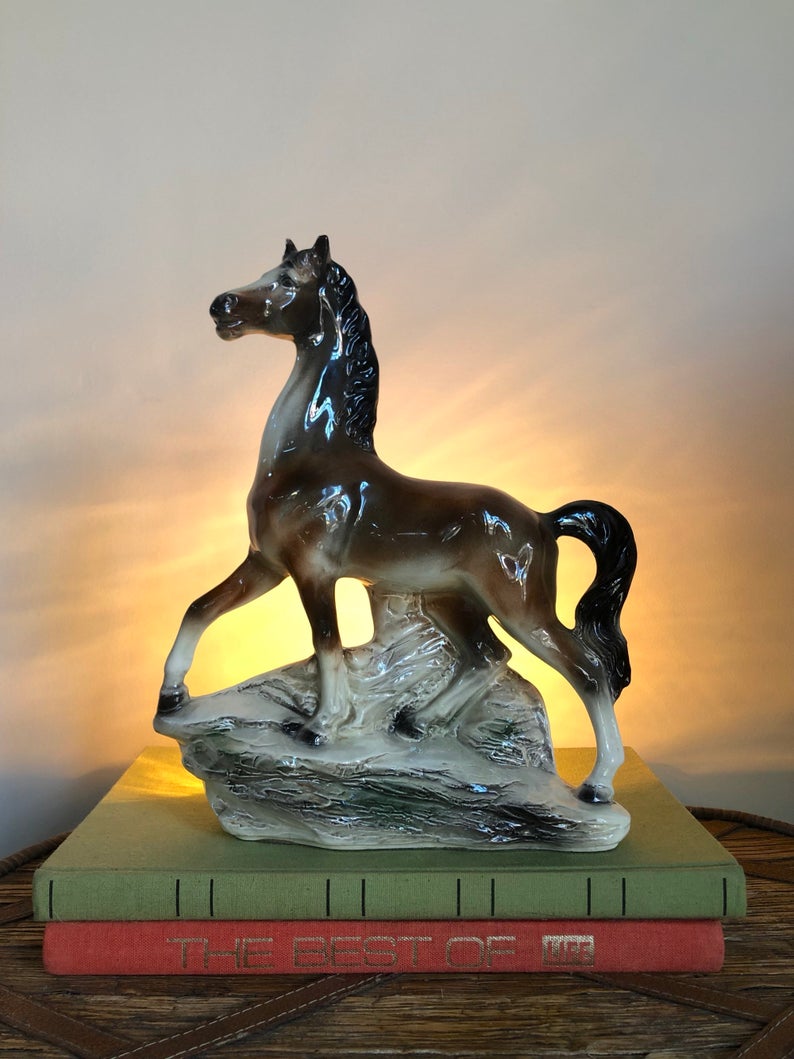
Pretty sleek for a gimmick, no? And when it comes to television, popular culture has of course endlessly inspired design, and arguably no other genre has had a bigger influence in the 20th century than sci-fi…
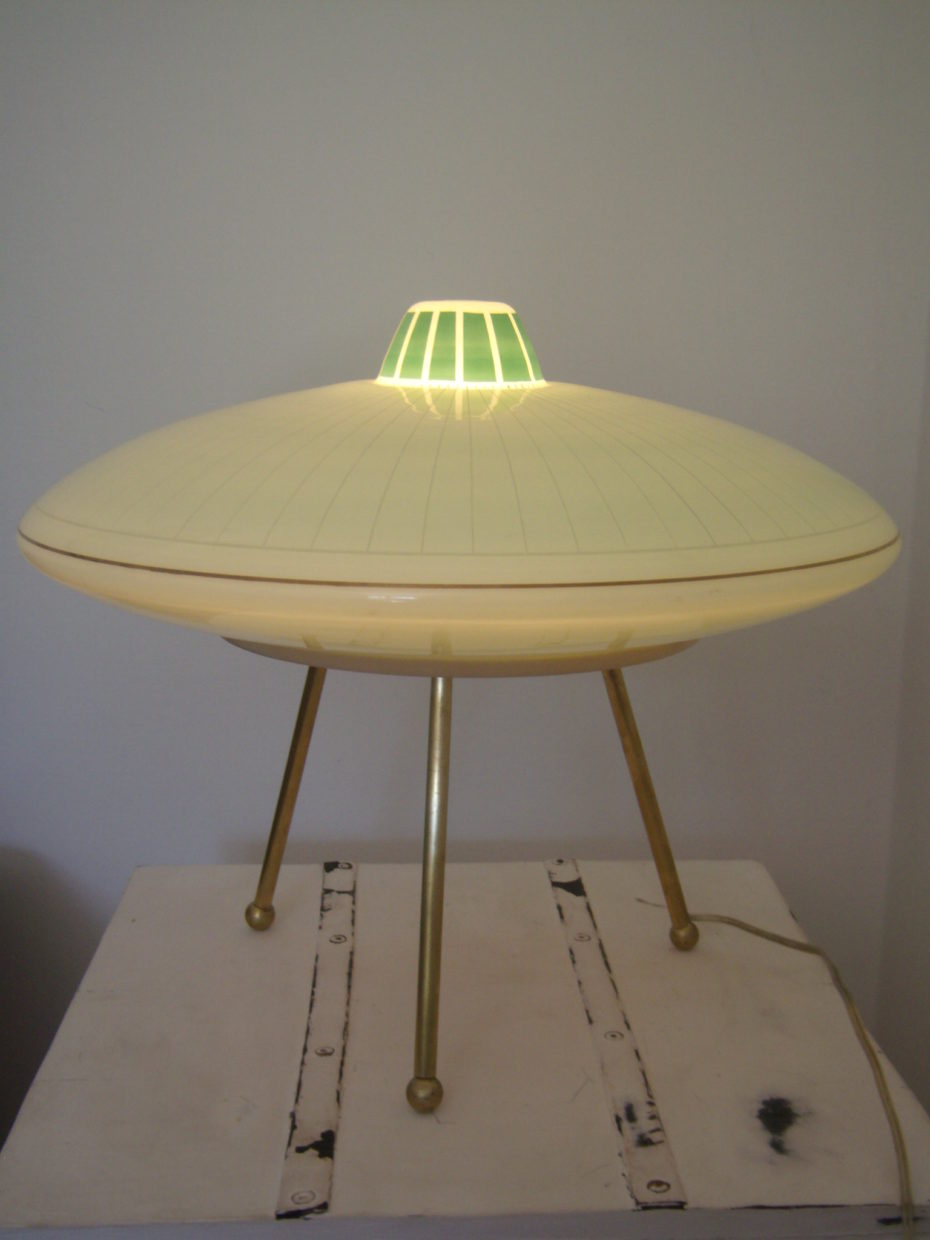
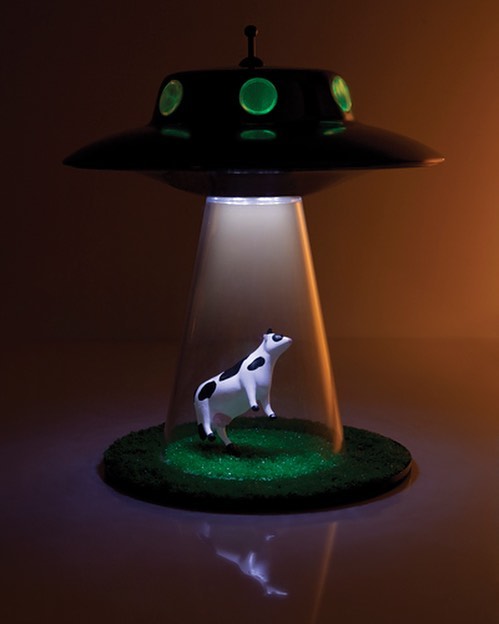
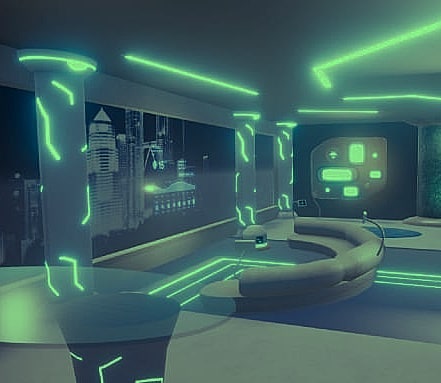
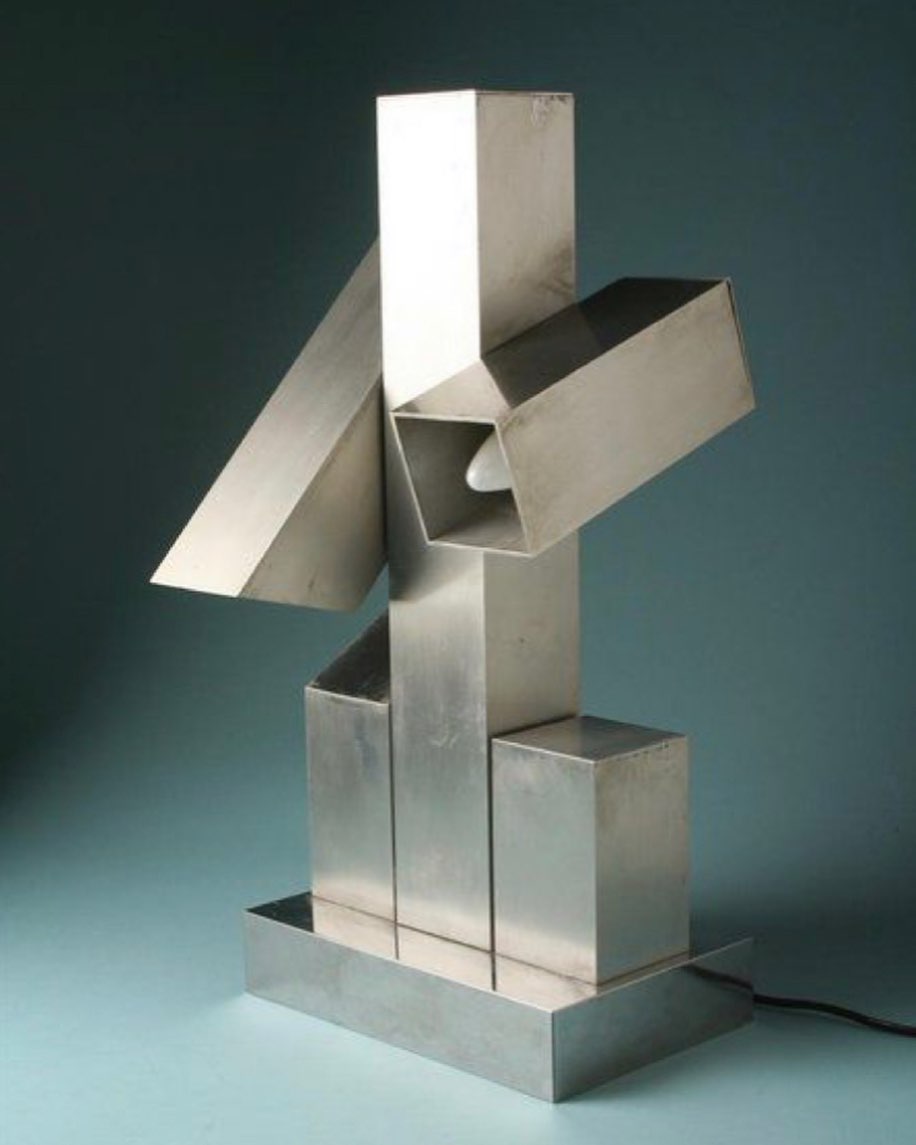
But to dispel the myth that elegance and kitsch can’t live hand-in-hand with “tolerware”! The term derived from the French tôle peinte (painted sheet metal) has produced some interesting metal fixtures for hundreds of years:
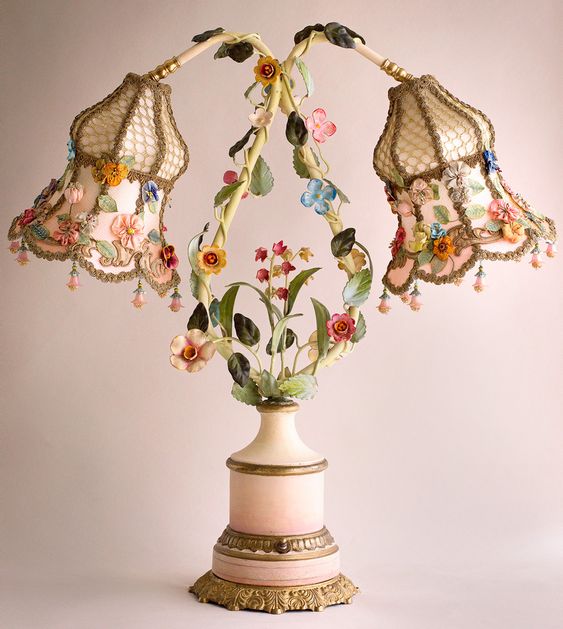
Classy, right? At the end of the day, though, we’re still suckers for the good ole tacky, bric-a-brac lamps. Drumroll please…
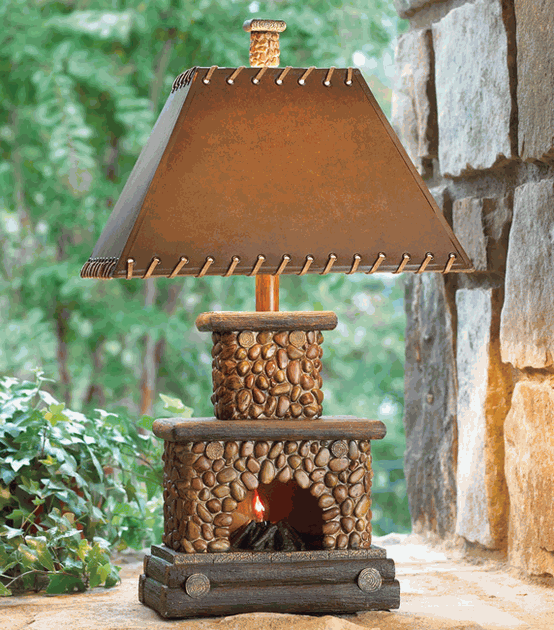
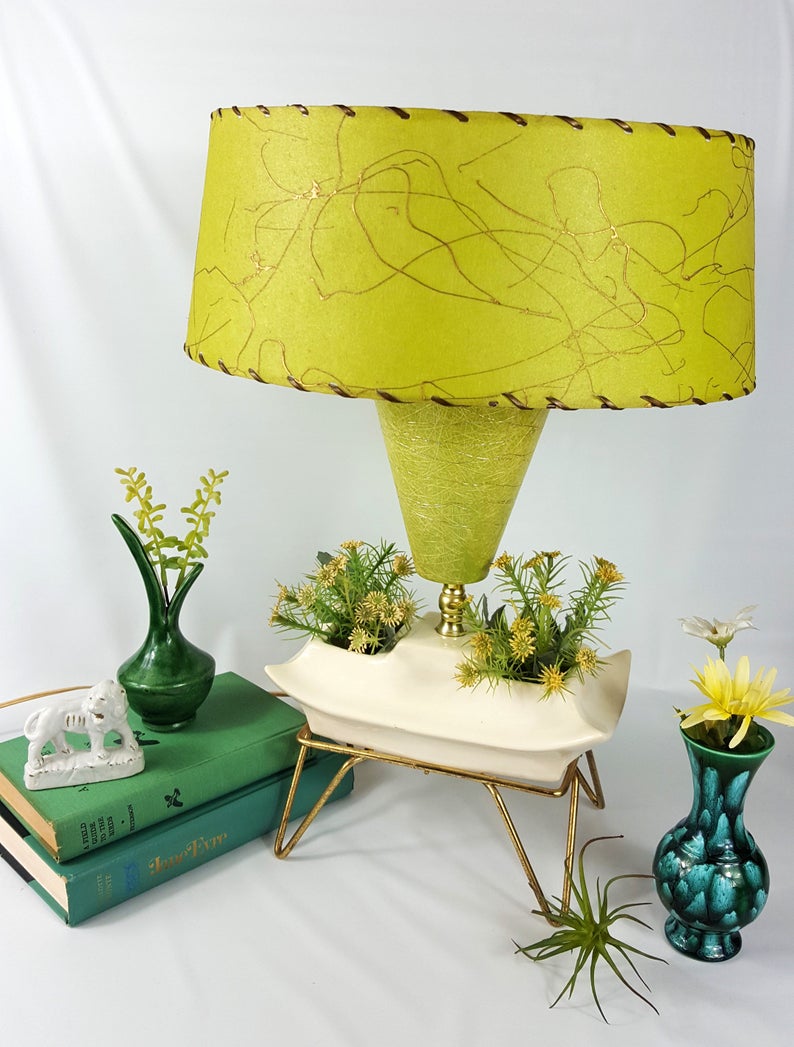
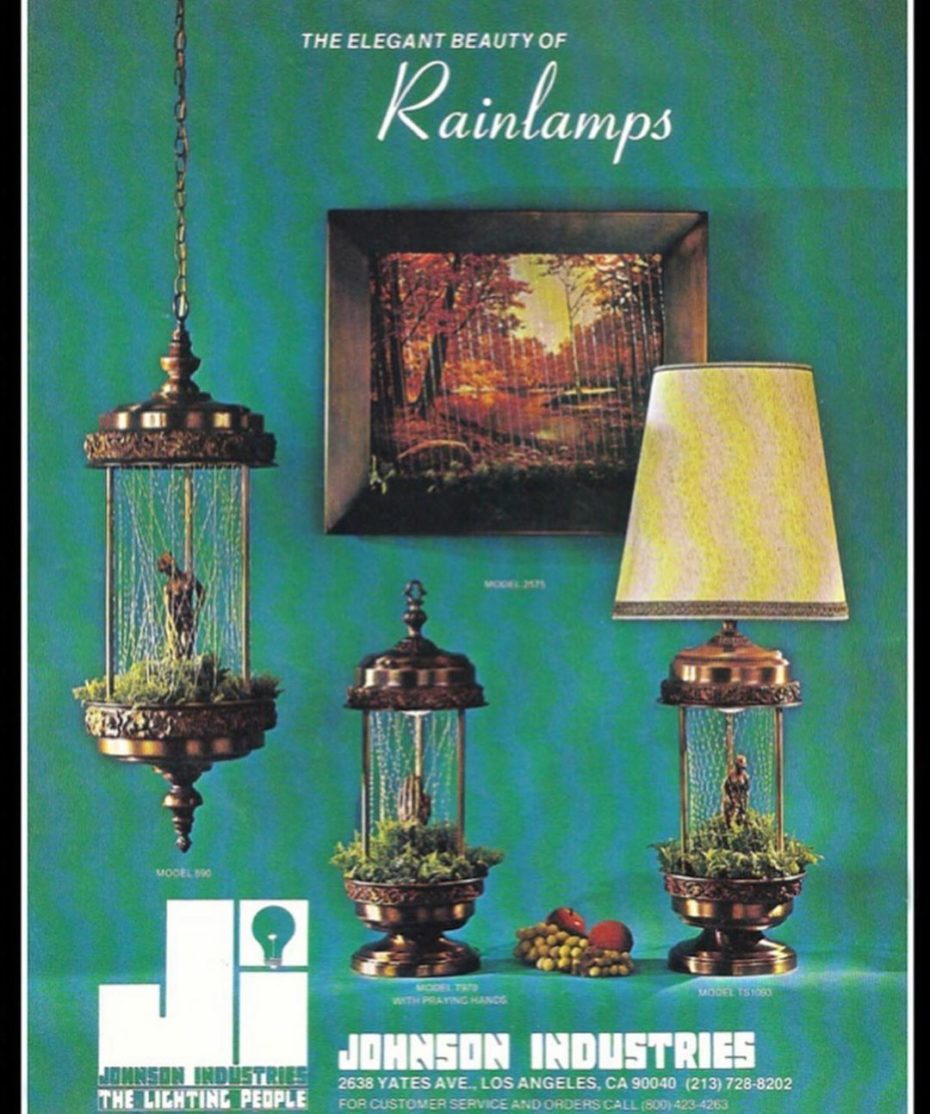

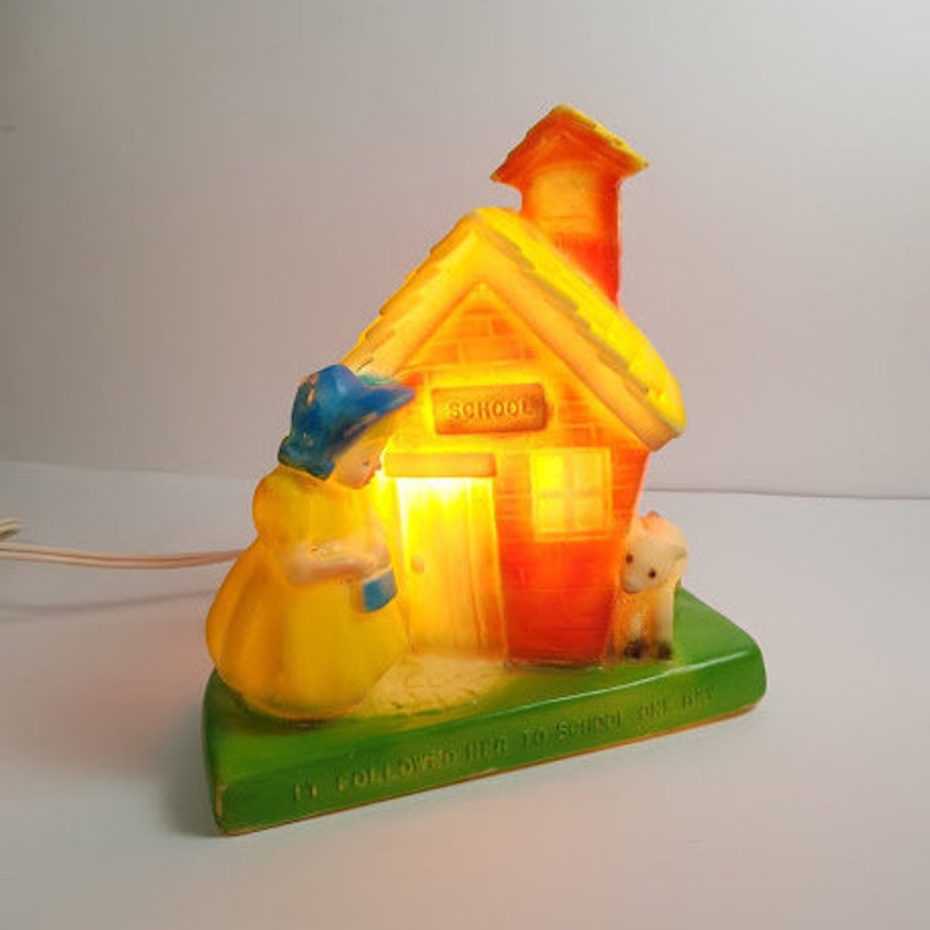
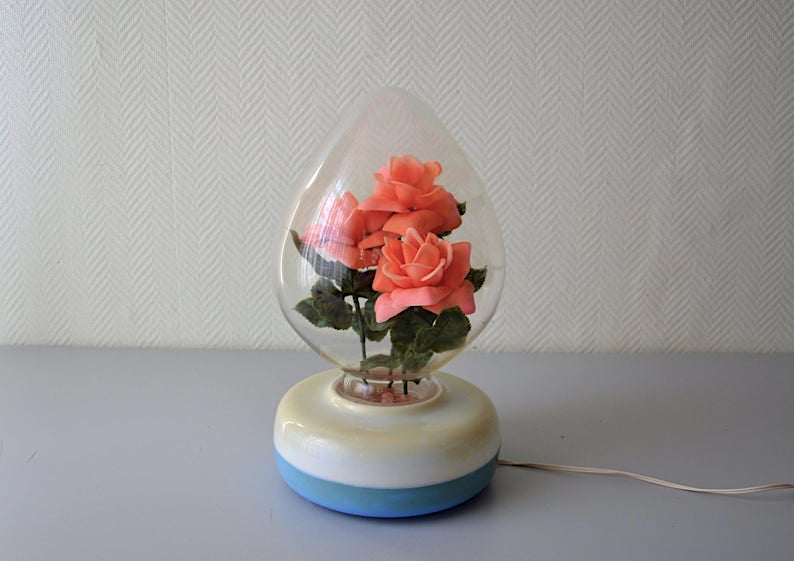
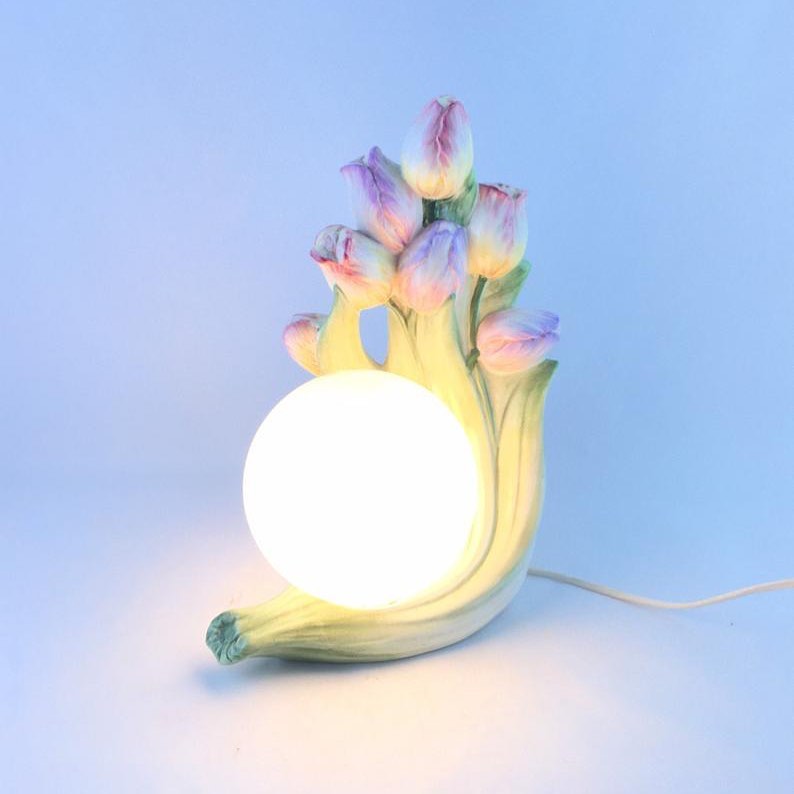
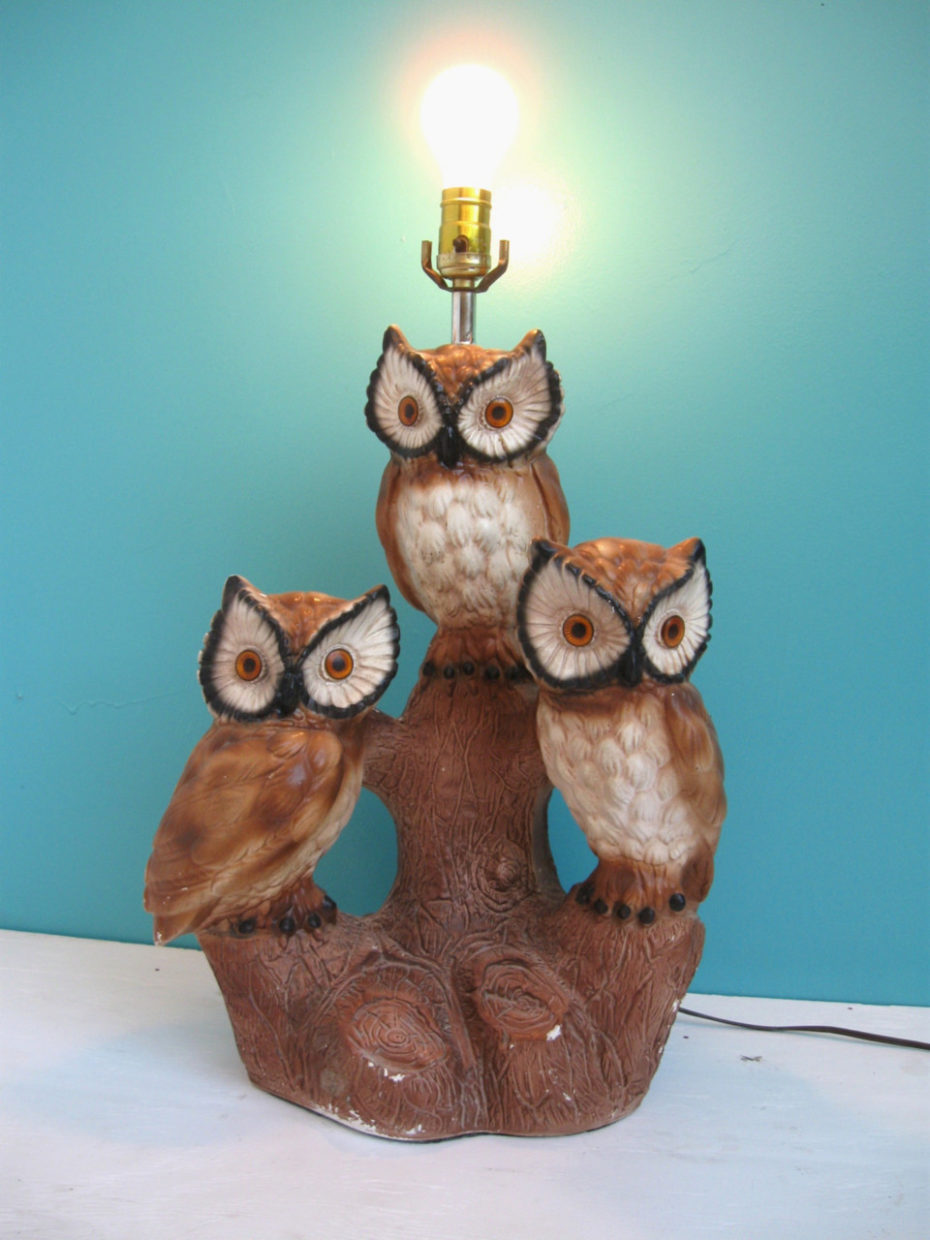
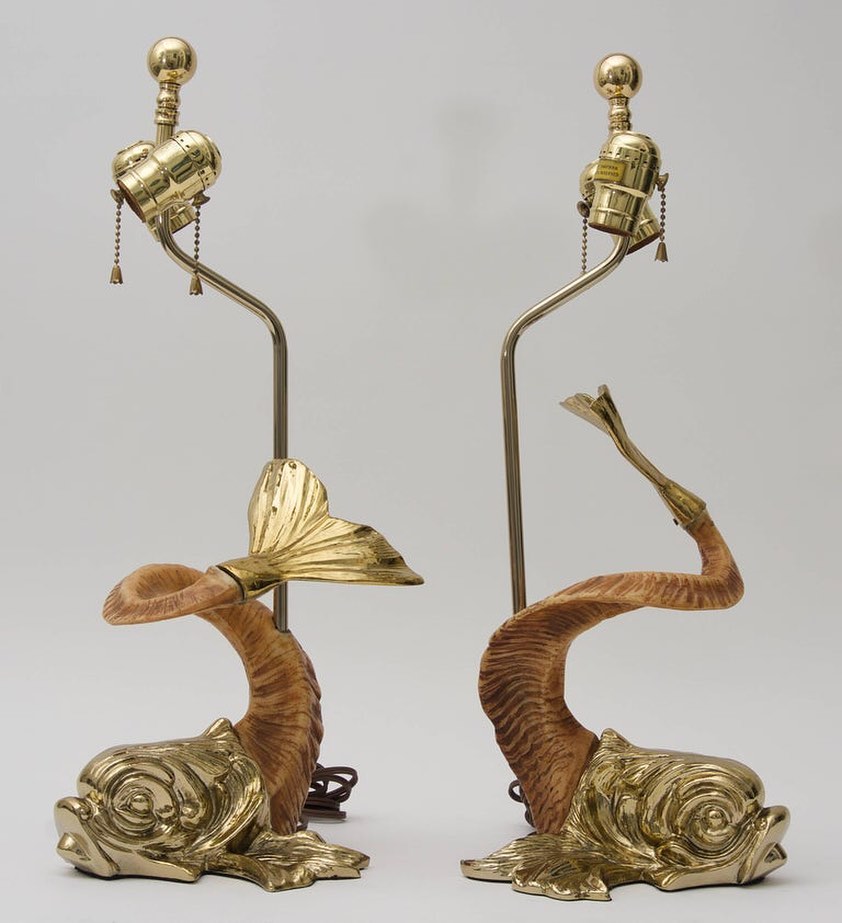
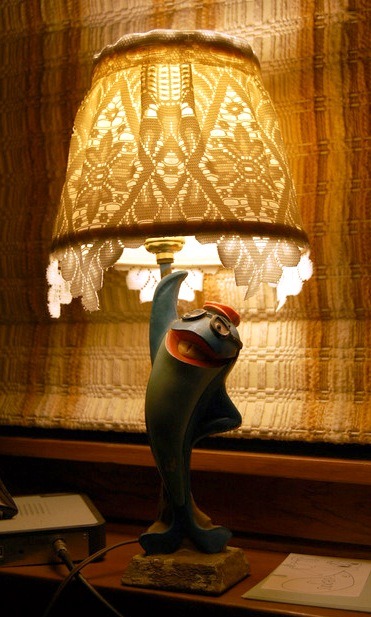
We highly suggest perusing Etsy, Ebay or Selency to find your dream statement lamp (cause we could do this all day). For now, it’s lights out.



